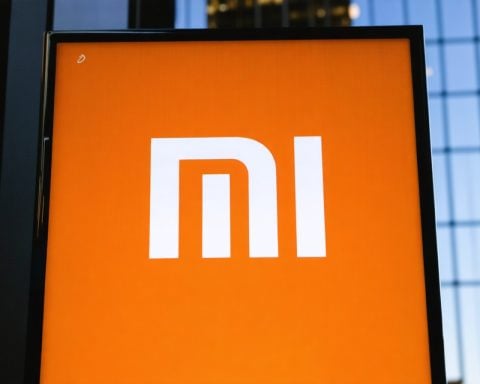- U.S. plans to restrict Chinese chip exports create uncertainty in financial markets, impacting stock futures negatively.
- Nasdaq 100 fell by 1.2%, and the S&P 500 decreased by 0.5% as a reaction to the news.
- The strategy aims to limit AI chip flow to China, affecting global supply chains and escalating economic tensions.
- U.S. Treasury yields, including the 10-year and 2-year, have dropped, reflecting heightened investor anxiety.
- Analysts advise staying vigilant amid the market volatility caused by geopolitical and policy shifts.
- The situation highlights the intricate interplay between international policies and market stability.
Dark clouds loom over the financial markets as whispers of impending U.S. restrictions on Chinese chip exports send shockwaves through trading floors. Stock index futures tumbled, painting a scene of caution and unpredictability. The tech-dominated Nasdaq 100 took a notable 1.2% dive, while the S&P 500 shed 0.5% of its value.
In the spaces where finance and politics collide, the Trump administration meticulously plans a strategy to curb China’s semiconductor ambitions. Utilizing a web of alliances, U.S. officials embark on a campaign to rally support for tighter control measures. Their focus zeroes in on restricting the flow of AI chips to China, raising tensions in fragile global supply chains.
As investors absorbed the ramifications, the once-stable ground of Treasury yields showed signs of shifting. The 10-year yield slipped to 4.34%, and the 2-year yield to 4.13%, signaling growing apprehension among market players. The previous day’s trading session only compounded the uncertainty as major indices ended on a sour note, except for a modest gain in the Dow.
Amid this volatile backdrop, the call for vigilance grows stronger. Analysts urge a proactive stance—monitor developments closely to navigate the turbulent financial waters. In today’s interconnected world, every minor shift among economic giants ripples through the markets. The latest U.S. maneuvers against China’s tech sector remind us of the fine balance between policy and market vitality, a balance that requires both watchfulness and agility.
Navigating a World of Tensions: How U.S. Restrictions on Chinese Chip Exports Could Shape the Future
Overview of U.S. Semiconductor Restrictions on China
The Trump administration’s proposed restrictions on semiconductor exports to China aim to curb the Asian giant’s ambitions in AI technology and beyond. This strategic maneuver intends to limit China’s access to advanced technologies necessary for the development of artificial intelligence and other cutting-edge sectors, maintaining the U.S.’s competitive edge.
How-To Steps & Life Hacks: Preparing for Market Volatility
1. Diversify Investment Portfolio: Spread investments across various sectors to mitigate the impact of any one sector’s downturn.
2. Stay Informed: Regularly track news regarding U.S.-China relations, focusing on export restrictions and technology developments.
3. Utilize Stop-Loss Orders: Protect investments by automatically selling stocks when they reach a certain loss threshold.
Real-World Use Cases: Industries Affected
– Technology: Companies relying heavily on Chinese markets may face significant disruptions.
– Manufacturing: Supply chains involving semiconductors might experience delays and increased costs.
– Finance: Investors in both Chinese and U.S. markets will need to recalibrate strategies in response to increased volatility.
Market Forecasts & Industry Trends
According to analysts, the semiconductor industry might witness slower growth as tensions rise. The market is expected to increasingly shift towards regions with friendly trade relations, pushing companies to explore alternative suppliers and partners.
Reviews & Comparisons
When comparing the impacts of these strategies, the U.S. holds a significant advantage with its technological prowess. However, China’s effort to boost its own semiconductor industry continues to grow, hinting at competitive resilience.
Controversies & Limitations
While the U.S. attempts to restrict chip exports, critics argue that these measures could propel China’s innovations as it becomes more self-reliant. Additionally, the restrictions might backfire, leading to strained diplomatic and trade relations.
Features, Specs & Pricing
Expect to see shifts in semiconductor prices due to supply shortages and increased demand from alternate markets.
Security & Sustainability
This geopolitical standoff also impacts cybersecurity, as both nations invest heavily in securing their digital infrastructures against potential threats.
Insights & Predictions
In the short term, anticipate heightened market volatility. In the long term, we may see a bifurcation of global technology standards between Western and Eastern markets if tensions persist.
Tutorials & Compatibility
Investors should familiarize themselves with market analytics tools to monitor trends and adjust investments as needed. Consider platforms like Bloomberg Terminal for comprehensive financial insights.
Pros & Cons Overview
Pros:
– Preservation of U.S. technological advantage.
– Potential for innovation growth in the U.S. and allied nations.
Cons:
– Market instabilities impacting global economies.
– Possible long-term isolation of U.S. technology from global markets.
Actionable Recommendations
1. Monitor Interest Rates: Watch for fluctuations in Treasury yields as indicators of market confidence and economic health.
2. Communicate with Financial Advisors: Consult with professionals to adapt investment strategies for resilience against geopolitical shifts.
Conclusion
In an era of rapid geopolitical change, staying informed and maintaining a flexible approach to investments will be crucial. As the drama between the U.S. and China continues to unfold, learning how to navigate these complexities is vital. For ongoing updates and analysis, visit Bloomberg and CNBC.





















